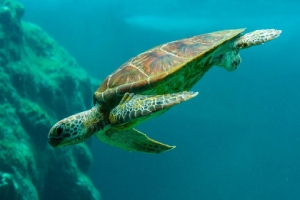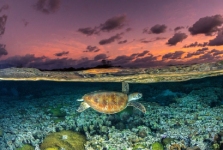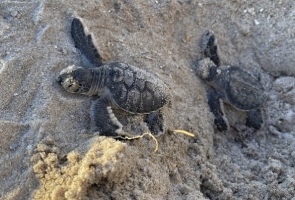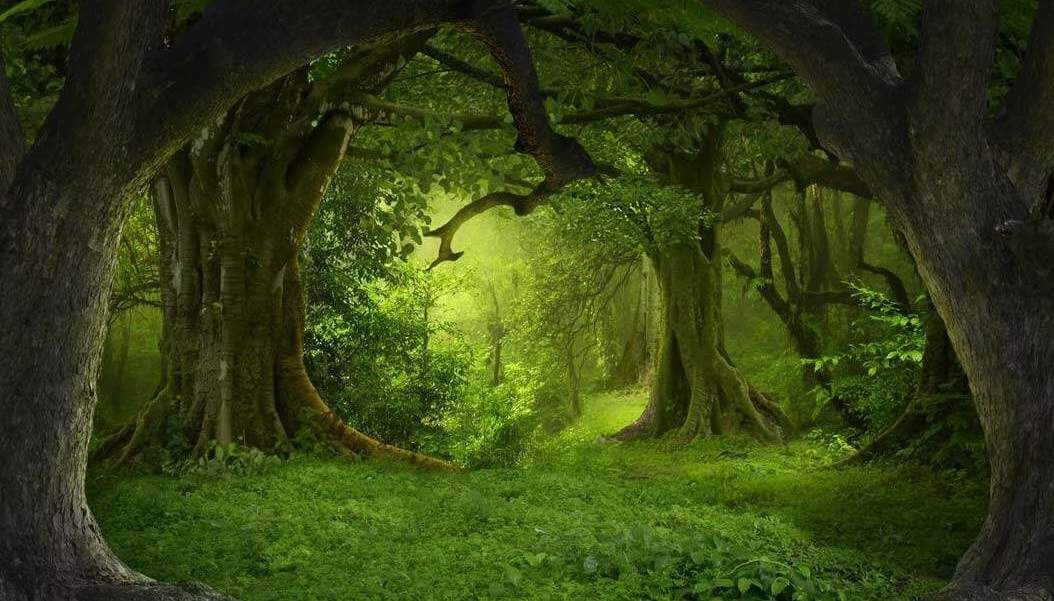Also known as marine turtles, sea turtles are large reptiles with brood bodies and flippers that inhabit tropical and subtropical waters of the world’s oceans. They’re some of the oldest beings on the planet, unchanged in form for 110 million years.
Sea turtles have been published as an ancestor of land and Pantanal turtles over the past million years Sea turtle There are seven species of Sea turtle. They are all from the Dermochelyidae family. Their names include:
- Hawksbill Sea turtle (Eretmochelys imbricata)
- Kemp’s Ridley Sea turtle (Lepidochelys kempii)
- Olive Ridley Sea turtle (Lepidochelys olivacea)
- Flatback Sea turtle (Natator depressus)
- Green Sea turtle (Chelonia mydas)
- Loggerhead Sea turtle (Caretta caretta)
- Leatherback Sea turtle (Dermochelys coriacea)
Most species of Sea turtles are threatened because they are slow and live for decades before they reach sexual maturity. Before they get to reproduce, many get captured accidentally or intentionally and killed. The minimum time from hatching to first reproduction is from 10 to 15 years.
How Sea Turtles Are Built for Life in the Ocean

Sea turtles are well-adapted to life in the ocean by their streamlined bodies and flipper-like limbs. They vary in size, from the olive ridley, which typically weighs less than 100 pounds, to the leatherback, which weighs between 650 and 1300 pounds.
They have shells, which consist of an upper part (the carapace) and a lower part (the plastron). Sea turtles cannot pull their limbs into their shells and have a more streamlined design to reduce drag in the water for efficient swimming. They can drink seawater and excrete excess salt through a special gland near the eyes.
Where Sea Turtles Live and the Incredible Journeys They Take

Like the leatherback turtle, sea turtles live in the ocean, where they breed, feed and sleep. Green and hawksbill turtles frequent tropical and subtropical reefs. The juvenile turtles often use seagrass beds and estuaries as nurseries before venturing into deeper water.
Female adults lay their eggs on land and migrate a thousand miles between the feeding ground and the nesting beach every year. They use the Earth’s magnetic field as their navigational tool.
What’s on the Menu and How They Hunt for Food
Sea turtle diet varies by species. Olssaven Sea turtles eat jellyfish, shrimp and small fish. Olive Ridley Sea turtles and flatback Sea turtles also eat jellyfish, shrimp and small fish. These two aquatic animals are omnivores, as they also consume seagrass and algae.
The Hawksbill eats sponges, which are toxic to most marine life, along with algae and soft corals. The Loggerhead (Chelonia mydas) and Kemps Ridley turtles are carnivores that eat sea urchins, shrimp, and crabs.
The Leatherback mainly feeds on soft-bodied marine animals, which makes it a key factor in controlling the jellyfish population. Its serrated beak allows it to graze on vegetation. But small invertebrates could be preyed upon by their juveniles.
Born on the Beach, Built for the Ocean

The reproduction and life cycle of a sea turtle is laying eggs, hatching, growing, mating, etc.
Female turtles lay their eggs on the beaches, and they hatch there and are buried for protection. The sand temperature dictates the hatchlings’ sex; warmer sand yields more female hatchlings, and cooler sand yields more males.
The babies must swim through predators as they make their way to the ocean after hatching. Once oceanic, a turtle grows rapidly, floating and adapting to life in an oceanic environment. As juveniles, they head to coastal areas for food and shelter. Sea turtles need between one and five decades to reach sexual maturity.
What’s Putting Them in Danger and How We’re Fighting Back
Sea turtles are not a success story: they face many threats — pollution, bycatch, coastal development and climate change. Both plastic and other materials pollute the ocean environment. Plastic bags, in some scenarios, are mistaken by Sea turtles for jellyfish and, when acted upon, result in ingestion and consequent blockage that proves fatal. They can also be accidentally swept up in fishing nets, a deadly encounter.”
Human development near coastal nesting areas can disrupt turtles and their eggs. Finally, Climate change, like rising sea levels, ocean warming and intensifying storms can endanger Sea turtles.
What’s Being Done to Save Them and Reduce Pollution
Various conservation efforts have been undertaken over the decades. Increase awareness- Sea turtle conservation promotes responsible tourism and reduces harmful human activity. Another is ramping up efforts to stop ocean plastic pollution so that Sea turtles don’t swallow even more of it.
Over the years, a number of conservation efforts have been attempted. Sea Turtle conservation raises awareness. Responsible tourism reduces destructive human activities. One is ramping up efforts to cut down on ocean plastic pollution so Sea turtles aren’t eating it.

